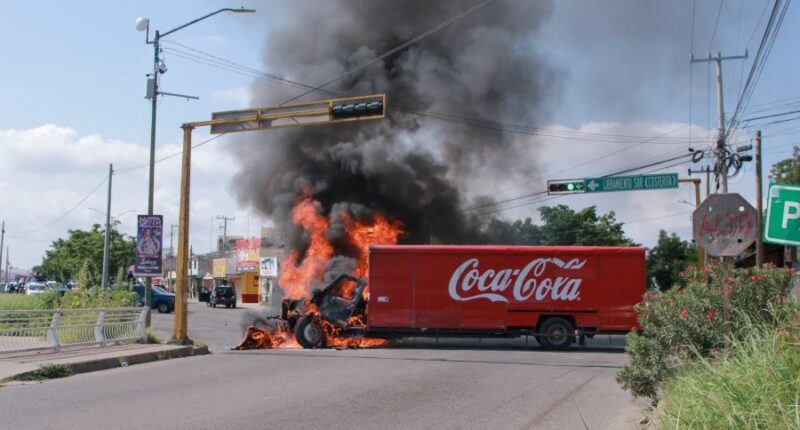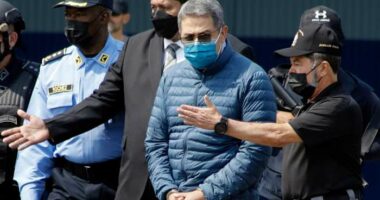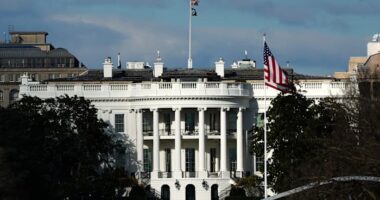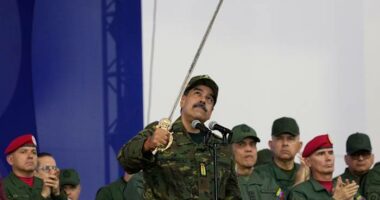Share this @internewscast.com
A major crisis erupted along Mexico’s Pacific Coast after an unauthorized landing by a rogue aircraft at a small airport in New Mexico, west of El Paso, last summer.
Onboard the plane were Ismael “El Mayo” Zambada and Joaquin Guzman Lopez, both influential members of the Sinaloa cartel. The pilot’s identity and nationality are still subjects of uncertainty.
Immediately after landing at the Doña Ana County Jetport, Guzman surrendered to U.S. officials and is now facing trial in Chicago for federal charges involving drug trafficking and money laundering. Meanwhile, Zambada, alleging Guzman kidnapped him, recently confessed to several federal offenses in New York.
This kidnapping, rigorously penalized within Mexican drug circles, has triggered a wave of violence resulting in 1,800 deaths and countless disappearances in areas controlled by the Sinaloa cartel.
‘Welcome to Culiacan’
The chaos erupted on September 9, 2024, when armed groups confronted the Mexican military in a Culiacan neighborhood, the capital of Sinaloa state. The city became a battleground with gunfire, vehicles ablaze, school closures, and canceled government Independence Day events.

In the initial week alone, over 50 individuals were killed, and many more were unaccounted for. Streets were littered with mutilated bodies, and September 17 saw an alarming record of 30 murders in a single day.
A white van with the phrase “Welcome to Culiacan” was abandoned with five bodies inside the day Mexico surged troops to contain violence attributed to all-out war between Guzman’s brothers, collectively known as “Los Chapitos,” and Zambada’s son Ismael “Mayito Flaco” Zambada Sicairos.

Mexican police found a quick way to identify which faction the dead belonged to. The Chapitos left baseball hats on top of piled bodies, mocking their jailed leader’s (El Mayo Sr.’s) penchant for headwear. Mayito Flaco’s soldiers left pizza boxes next to his rivals’ cut-up enforcers.
“The dead are not all soldiers of the cartel. They are innocent civilians there, law enforcement, military. Culiacan has had a number of security personnel who’ve been killed in this war,” said Michael Ballard, director of intelligence for the Virginia-based Global Guardian security firm.
The raging war inside the Sinaloa cartel isn’t all about revenge but also about greed.
“Cutting off the head of the snake doesn’t always work,” said Ballard, referring to the arrest of “El Mayo” and the 2017 extradition to the United States of cartel co-founder Joaquin “El Chapo” Guzman. “You end up with a power vacuum, a struggle. You see factions vying to control and you see the violence really spike. That’s what we’ve seen in Sinaloa.”
The violence in Sinaloa rages just as President Trump puts pressure on Mexico to stem the flow of drugs to the United States and take down the cartels. The Sinaloa cartel is one of eight transnational criminal organizations the U.S. has designated as Foreign Terrorist Organizations.

President Claudia Sheinbaum this week played up a graphic showing the murder rate has been going down in Sinaloa in the past two months. But the most telling stat on that chart is how an average of 1.4 daily murders were reported in Sinaloa before the conflict broke out and remain at 3.84 a day as of last month.

“The natural conclusion (of the war) is this is going to keep going until there’s a winner,” Ballard said. “You’re going to eventually have one group taking over control of the original Sinaloa cartel territory or you could see agreement to split territory … but I really don’t think that’s likely. I think this is going to keep going.”
The conflict likely isn’t confined to Sinaloa, which hugs Mexico’s northern Pacific Coast. The cartel controls large swaths of the U.S.-Mexico border as far as Juarez and has a presence at the Guatemalan border and in South American countries like Colombia and Ecuador.
Soldiers of “Los Chapitos” and of “El Mayito Flaco” are likely killing each other there as well.
Where is the Mexican government in all this?
Mexico has deployed 14,000 soldiers to Sinaloa and surrounding states, including Mexican marines and army special forces. Despite monthly fluctuations in the number of homicides, the killings continue.
“In some ways, the deployment of this security personnel is adding fuel to the fire. It doesn’t always end with peace,” Ballard said. “Like I mentioned, they’ve become part of the casualty count. The cartel (factions) just sees them as a second or third opponent.”

Sheinbaum is caught between a rock and a hard place when it comes to dealing with the cartels. Her predecessor, Andres Manuel Lopez Obrador, became infamous in the U.S. for his “hugs, not bullets” approach to cartels, whose influence and involvement in fentanyl trafficking skyrocketed during his six-year term.
On the other hand, a previous Mexican president, Felipe Calderon, tried to take out the cartels in the mid-2000s with disastrous results. Violence reached unprecedented levels and forced many Mexicans to apply for asylum in the United States.
Now Trump seems to be telling Mexico, “Get your house in order and if you can’t handle this, we’re going to come in and do what we need to do,” Ballard said. “Sheinbaum does not want U.S. troops on Mexican soil, does not want U.S. drone strikes hitting residential neighborhoods in Sinaloa or anywhere else in Mexico.”
But Trump, in a way, has already tested the waters of how far he can go in Latin America by blowing up a Tren de Aragua boat in the Atlantic Ocean.
Getting the house in order isn’t that easy in places like Sinaloa, where cartel soldiers blend into a population that has coexisted with them for decades.
“Unless you deploy half a million troops to Sinaloa and have a soldier on every corner of every neighborhood – and then you have the villages, the mountains, the very remote regions where it’s tough to maintain security. It’s an impossible situation that they’re in,” Ballard said.
The U.S. State Department maintains a “Do not travel” advisory to Sinaloa due to the homicides, kidnappings and carjackings. Most telling, it warns potential U.S. visitors of the risk of terrorism.
Ballard, whose employer provides security consulting for individuals and firms that must travel to dangerous areas due to business and personal reasons, urges travelers to exercise extreme care.
He said he would still travel to Mexico, though not to resorts like Mazatlan, Sinaloa.
“They (the Mexican government) will maintain a strong law enforcement presence to at least project strength in tourist destinations. (Mazatlan) is not somewhere where I would go. Given the choice, I’d rather be in Cancun or Los Cabos,” Ballard said.













